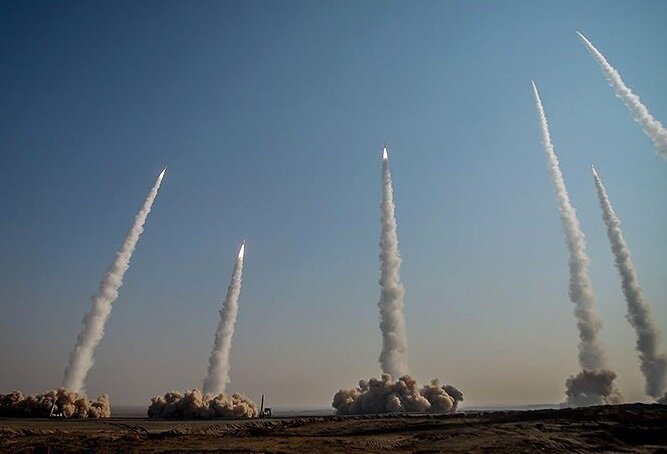IISS: How to curb Iran’s missile program

The Iranian Parliament (Majlis) passed a bill some two months ago that obliges the government to reduce commitments to the JCPOA if sanctions are not lifted within two months. A part of the approval, titled “Strategic Action to Lift Sanctions and Protect the Nation’s Rights”, entails halting the implementation of the Additional Protocol to the NPT if the sanctions are not lifted by February 23.
Abolfazl Amouei, the spokesman for the Iranian Parliament National Security and Foreign Policy Committee, told the Tehran Times on February 14, 2021, lawmakers are very serious to enforce the law.
In this context, the Washington Institute for Near East Policy (WINEP), a pro-Israel think tank that is quite close to the AIPAC, has commented on Tehran’s official stance towards voluntary implementation of the Additional Protocol.
Against this backdrop, recommendations on Iran’s missile program are also worth mentioning. For instance, Mark Fitzpatrick, an expert on nuclear issues at the International Institute for Strategic Studies (IISS) has discussed Iran’s missile program and how to limit it.
“A double-edged sword”
In a policy analysis on Feb 11, 2021, Omer Carmi, a former fellow at WINEP and West Asia expert at the IDF (Israel Defense Force), describes the “Strategic Action to Lift Sanctions and Protect the Nation’s Rights” as a means to give “Washington a sense of urgency”. He argues that “this approach could be a double-edged sword.”
Carmi believes that Iran’s position towards the JCPOA is a clear message to Washington that the Iranian party will arrive at the negotiation table with a clear playbook in hand to fulfill “a unified purpose.”
WINEP stresses that Tehran is not in a hurry to conclude a deal and prefers to take the “Wait-and-See” strategy since its final goal “is not a deal with Washington, but rather the removal of all sanctions.”
As usual, the Washington Institute for Near East Policy, one of the main architects of the Iran sanctions, accuses Tehran of conducting covert nuclear military researches, holding clandestine nuclear sites and insists that “Possible Military Dimensions” of Iran's nuclear program must be addressed. While repeating constant groundless accusations against Tehran, Carmi tries to turn the opposite side of the coin of suspending more commitments under the JCPOA by Tehran.
In this regard, the Israeli military expert believes that implementing the parliamentary law may induce a sense of urgency in the Oval Office, but the move indicates that “Iran is repeating its past errors with the IAEA”.
He argues that enforcement of the law could hinder the International Atomic Energy Agency’s ability to monitor Iran’s nuclear program, “investigate suspected clandestine activity, and address the many concerns raised over the year.”
WINEP which houses plenty of neoconservatives, hawkish policymakers, also warns that any change or hindrance in Tehran’s commitments to the IAEA “will push it closer to a noncompliance and would likely create more damage than value for Iran however, provoking the West and possibly alienating Russia and China.”
While in less than a week, the Iranian Parliament’s ratification will be enforced, analysts do not hesitate to comment on Iran’s nuclear program from various aspects including Iran’s missiles.
In this regard, IISS, a leading British strategic think tank has shed light on Iran’s missile program and stresses: “Tehran will never give up its missile development program. There is time to prevent such a dangerous development – but not by making unrealistic demands on Iran to stop all missile development. That Tehran will never do.”
IISS: Curb Iranian missiles “realistically”
Fitzpatrick, also a non-proliferation and disarmament expert at IISS, explains about Iran’s ballistic missiles and analyzes a report submitted by the UN Panel of Experts on North Korea sanctions to the UN Security Council on 8 February 2021. The report claims that North Korea and Iran “have resumed cooperation on long-range missile development projects.”
Analyzing Iran’s missile program technically as well as reminding Iran and North Korea’s cooperation during Iraq’s war against Iran in the 1980s, Fitzpatrick describes the UN report “worthy of notice”.
In this context, he describes Iran’s space program as a robust one with space launch vehicles which to date has not had a military application. However, the expert argues that these vehicles “ theoretically could be repurposed for military use, something no other nation has done with the kind of liquid-fuel engines that are currently the mainstay of Iran’s space launch program.”
Against the backdrop, the British institute states: “There is no reason to be confident that its (Iran’s) civilian and military programs will remain separate.”
In this regard, Fitzpatrick argues: “Iran depends on missiles for deterrence and defense, not to mention national pride. It does not need ICBMs (intercontinental ballistic missiles). Iran does not require any missiles with a range beyond 2,000km, given that all the potential targets in the region are within this radius.”
Therefore, the IISS which claims Iran is designing Shahab-3 “to clearly carry nuclear weapons”, draws a blueprint for a “realistic” missile negotiation with Iran as a reason to shape an “ambitious diplomacy.”
Fitzpatrick reiterates that such a path will not be easy to pass but if Tehran’s negotiating counterparts accept that Iran will never capitulate in terms of its missile program, there exist at least some prospect of success.
In this context, the IISS recommends:
- “Missile negotiations with Iran should aim to lock in this range limit (2,000km).”
- “And to persuade Iran to accept transparency measures and engine limits for its space launches.”
- “Ideally, Iran should also forego the missiles in its arsenal such as the Shahab-3 that were clearly designed to carry nuclear weapons.
Leave a Comment